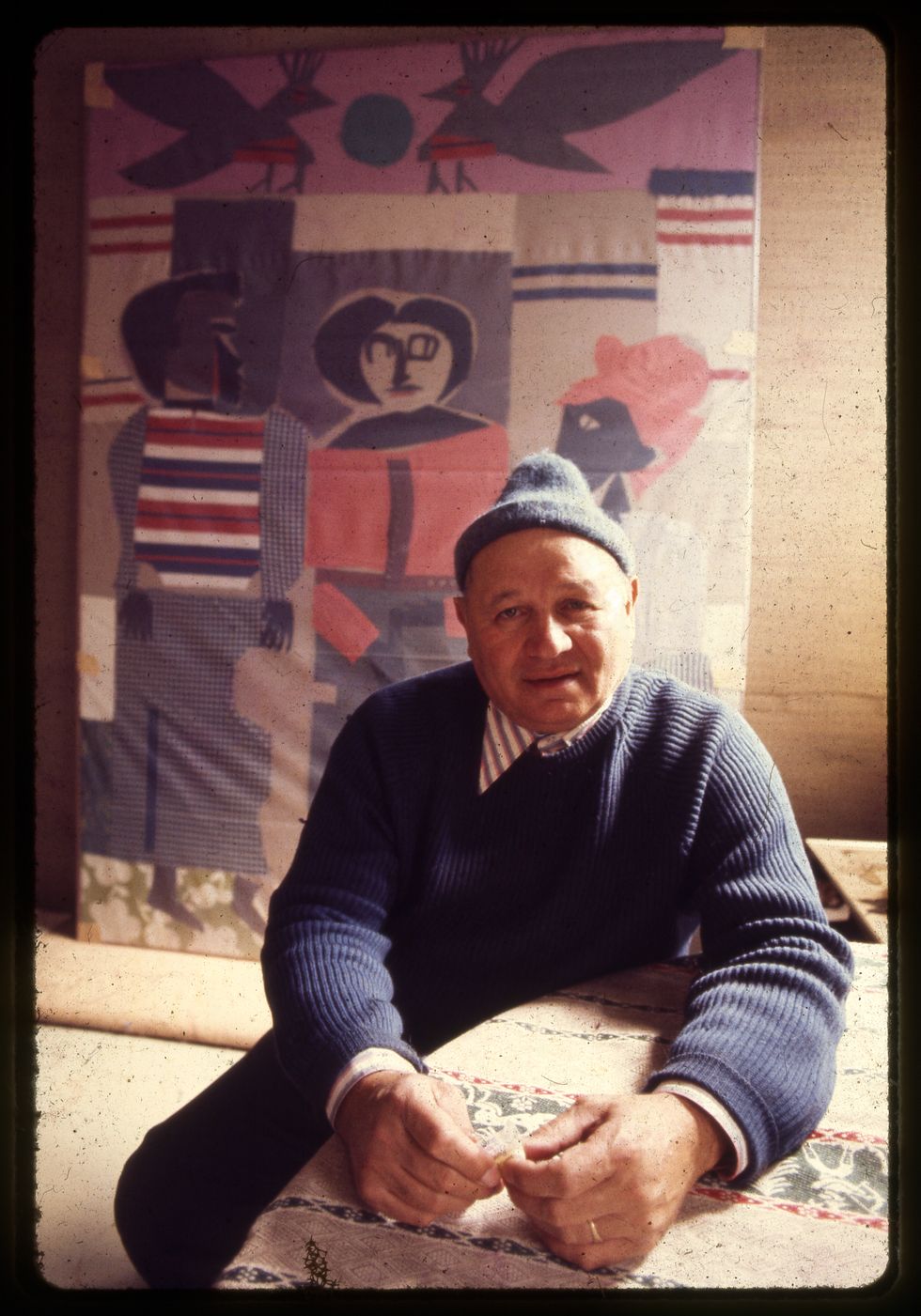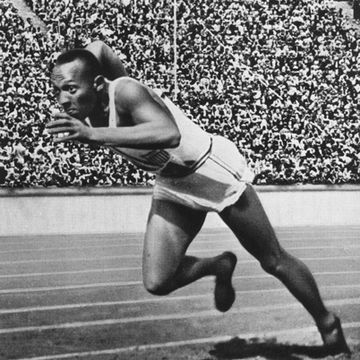(1911-1988)
Who Was Romare Bearden?
Considered one of the most important American artists of the 20th century, Romare Bearden’s artwork depicted the African American culture and experience in creative and thought-provoking ways. Born in North Carolina in 1911, Bearden spent much of his career in New York City. Virtually self-taught, his early works were realistic images, often with religious themes. He later transitioned to abstract and Cubist style paintings in oil and watercolor. He is best known for his photomontage compositions made from torn images of popular magazines and assembled into visually powerful statements on African American life.
Early Life
Born September 2, 1911, in Charlotte, North Carolina, Bearden was the only child of Richard and Bessye Bearden. The family moved to New York City when he was a toddler. Bessye was a reporter for a leading Black newspaper and eventually become president of the Negro Women’s Democratic Association. The household was a gathering place for Harlem Renaissance luminaries such as W.E.B. DuBois, Langston Hughes and Duke Ellington.
After graduating from high school in Pittsburgh, Pennsylvania, where he was living with his maternal grandmother, Bearden played a little semi-pro baseball in Boston. He returned to New York City to attend college, with plans to go to medical school. He majored in science at New York University and graduated with a bachelor’s degree. But while there, he worked on the school humor magazine as a cartoonist and in his senior became its editor. After college he joined a Black artist group and became excited about modern art, particularly Cubism, Futurism, post-Impressionism and Surrealism. He traveled to France to study at the Sorbonne.
Bearden was drafted into the United States Army in 1942 and served in the all-Black 372nd Infantry Regiment until May 1945. After his return to civilian life, Bearden got a job as a New York City social caseworker to supplement his income as an artist. In 1954 he married Nanette Rohan, 27 years his junior, who was an accomplished dancer and founder of the New York Chamber Dance Company.
Art and Style
The works of Bearden’s cover a wide range of techniques, themes, and styles. In college, Bearden aspired to be a cartoonist, drawing for and then editing Boston College’s humor magazine in the early 1930s. He continued his cartooning after he moved to New York City to attend New York University. Studying for medical school, he graduated with a Bachelor’s Degree in science.
Living in Harlem, he joined a Black artists group and became excited about modern art, particularly, Cubism, post-Impressionism and Surrealism. His paintings depicted scenes of the American South. Some works were more realistic and showed influence from Mexican muralists like Diego Rivera. Other works were done in the Cubist style with rich colors and simple forms. Like many budding artists, Bearden couldn’t make a living solely from his art. He juggled several jobs while taking advanced classes and occasionally drew cartoons for several African American publications including DuBois' The Crisis.
'The Passion of Christ'
After serving in World War II, Bearden returned to his art, which displayed an increasingly abstract style. In 1945 he exhibited a series of Cubist-inspired watercolor and oil paintings titled The Passion of Christ. The series of 24 pieces is more a statement about the human condition than a depiction of the biblical text. Between 1950 and 1952, he studied at the Sorbonne in Paris where he met Pablo Picasso. His later paintings showed influences of old masters such as Johannes Vermeer and Rembrandt as well as modern artists like Picasso and Henri Matisse. He also studied Chinese painting techniques and co-wrote a book on Chinese art.
Collages
Bearden is perhaps best known for his collage and photomontage compositions, which he began creating in the mid-1960s. During this time, he felt he was struggling in his art between expressing his experiences as a Black man and the obscurity of abstract painting. For Bearden, abstraction wasn’t clear enough for him to tell his story. He felt his art was coming to a plateau, so he started to experiment again. Combining images from magazines and colored paper, he would work in other textures such as sandpaper, graphite and paint. Influenced by the civil rights movement, his work became more representational and socially conscious. Although his collage work shows influence of abstract art, it also shows signs of African American enslaved crafts, such as patch-work quilts, and the necessity of using whatever materials are available. Taking images from mainstream pictorial magazines such as Life and Look and Black magazines such as Ebony and Jet, Bearden crafted the African American experience in his works.
'The Block'
One of Bearden’s works that best captures this amalgam of styles is titled The Block. It depicts a Harlem street, with row-house buildings and the bustling life of the neighborhood. At first glance, it’s a cacophony of shapes and images. But as the scene settles in, the faces of people catch the eye. Composed of two or more fragments of photos, they begin to reveal a lifetime of experiences.
The Harlem Renaissance
Bearden’s collage work has also been compared to jazz improvisation. Growing up during the Harlem Renaissance, he was exposed to many of the jazz greats. Ellington was one of his first patrons. Bearden wrote songs for Billie Holiday and Dizzy Gillespie and later designed a record cover for Wynton Marsalis. In his collages, Bearden’s images reflect some of the elements of jazz with its interplay among the characters and improvisation of the materials used.
Though Bearden was vastly prolific, he is not that widely recognized as a major American artist. The American art world possessed the same prejudices and segregation of society. Also, Bearden’s work is hard to categorize. But during this life and after, his exhibitions have received enthusiastic reviews and critical praise and he was recognized with multiple awards and honorary doctorates.
Death
By age 58, Bearden had reached a level of recognition (and income) that he was able to become a full-time artist with his own studio. He earned grants and commissions and was often a visiting professor at universities. By the 1960s, his medium of choice had moved from painting to collages, though he continued to paint large scale murals and series pieces for museum and gallery exhibitions. Though he was still working in his studio, Bearden contracted bone cancer and on March 12, 1988, died in New York City. In the last few years of his life, Bearden and his wife made plans for a foundation that would aid in the education and training of talented art students. The Romare Bearden opened in 1990.
QUICK FACTS
- Birth Year: 1911
- Birth date: September 2, 1911
- Birth State: North Carolina
- Birth City: Charlotte
- Birth Country: United States
- Gender: Male
- Best Known For: Romare Bearden is considered one of the most important American artists of the 20th century. He depicted aspects of Black culture in a Cubist style.
- Industries
- World War II
- Art
- War and Militaries
- Theater and Dance
- Astrological Sign: Virgo
- Schools
- Sorbonne
- Columbia University
- Art Students League in New York City
- New York University
- Nacionalities
- American
- Death Year: 1988
- Death date: March 12, 1988
- Death State: New York
- Death City: New York City
- Death Country: United States
Fact Check
We strive for accuracy and fairness.If you see something that doesn't look right,contact us!
CITATION INFORMATION
- Article Title: Romare Bearden Biography
- Author: Biography.com Editors
- Website Name: The Biography.com website
- Url: https://www.biography.com/artists/romare-bearden
- Access Date:
- Publisher: A&E; Television Networks
- Last Updated: April 15, 2021
- Original Published Date: April 2, 2014













